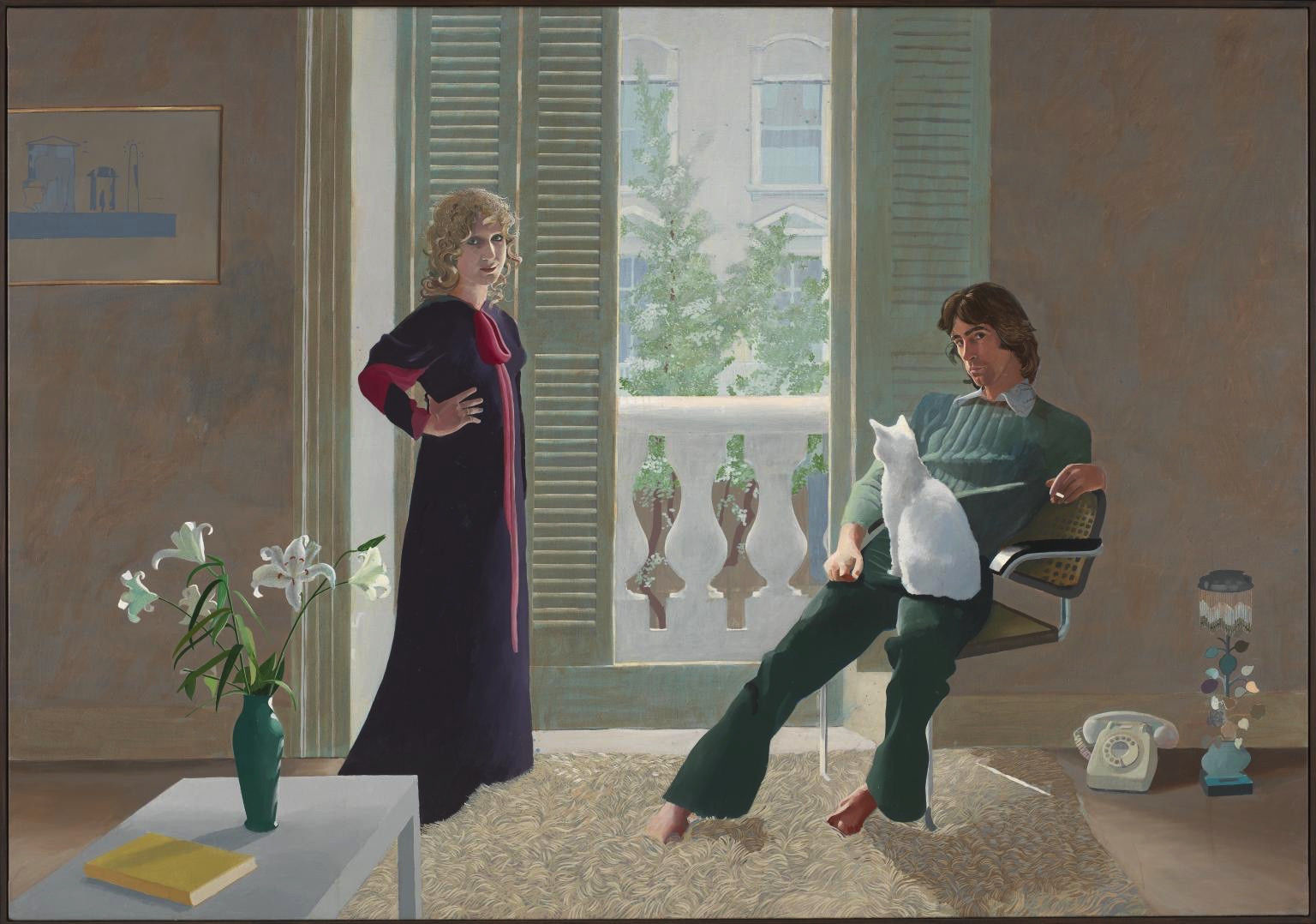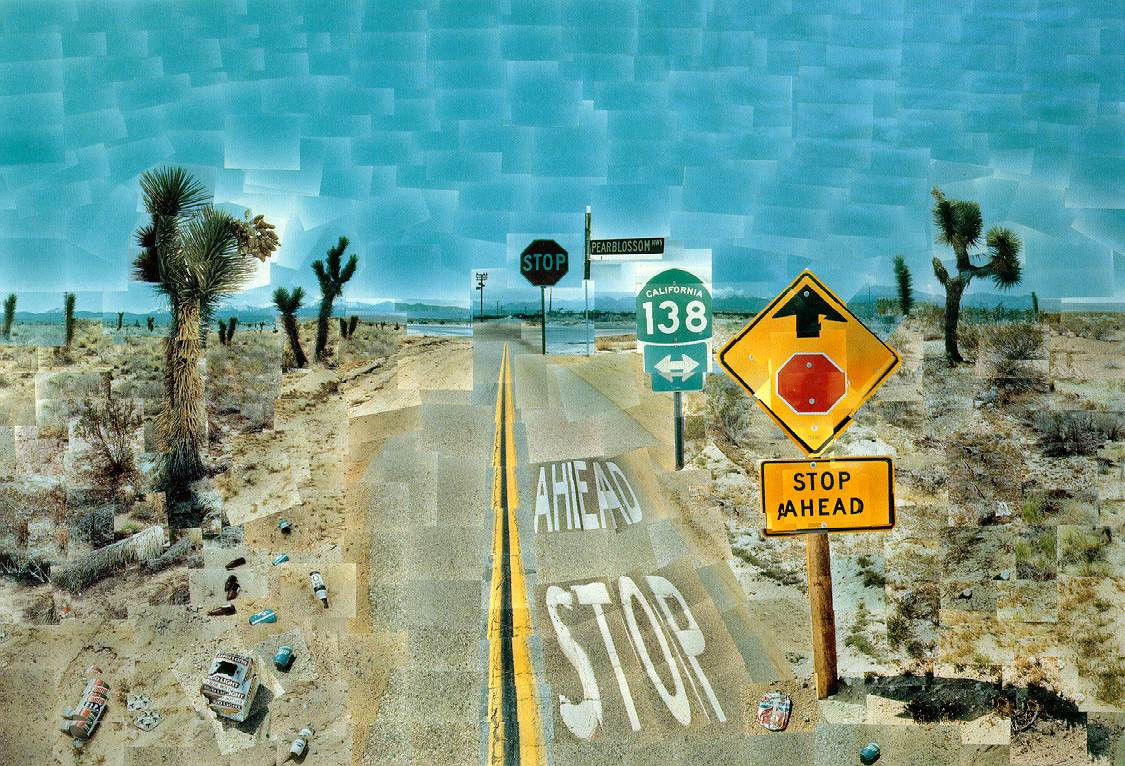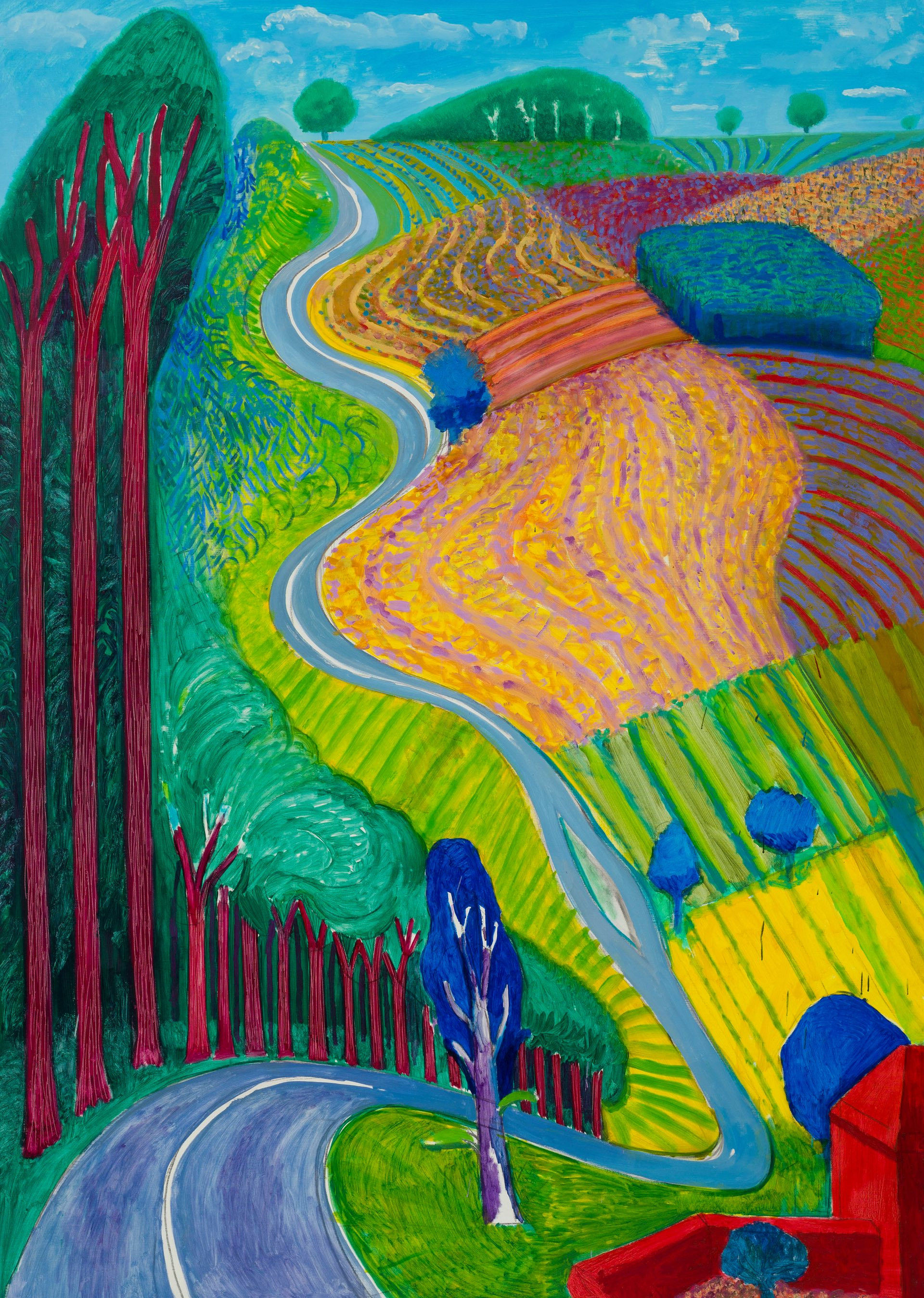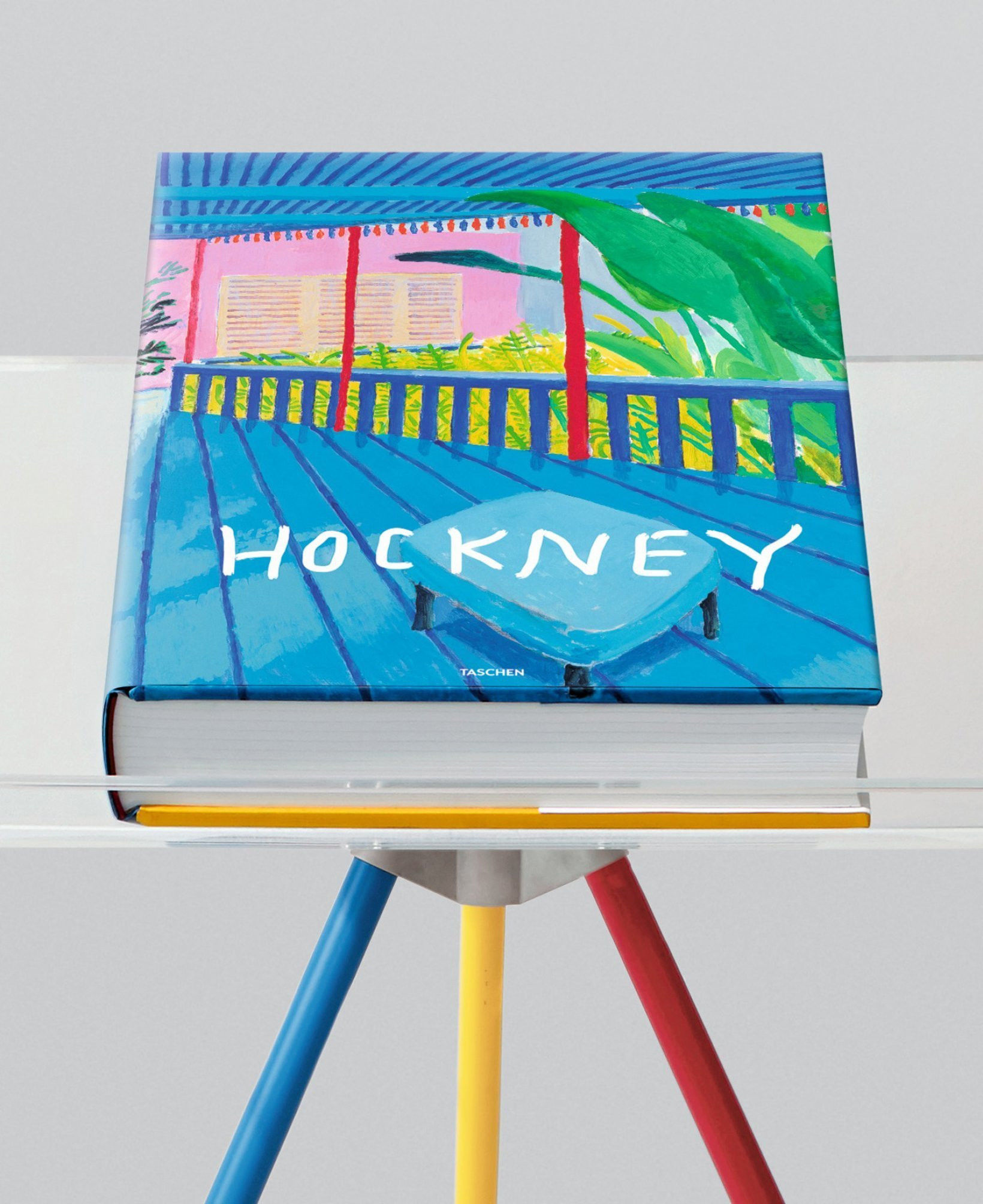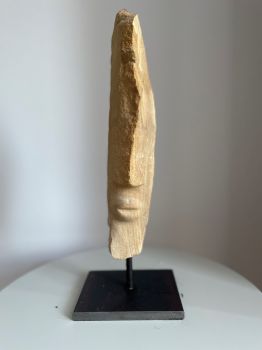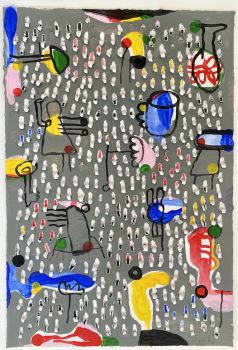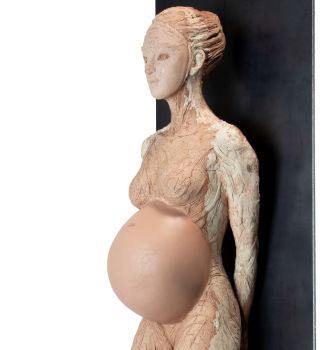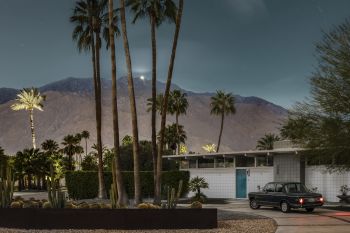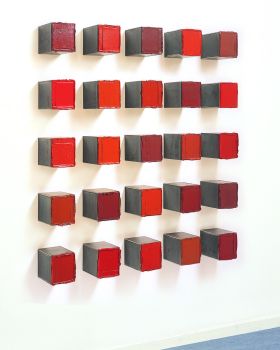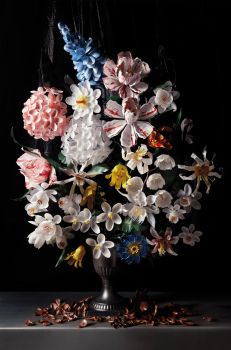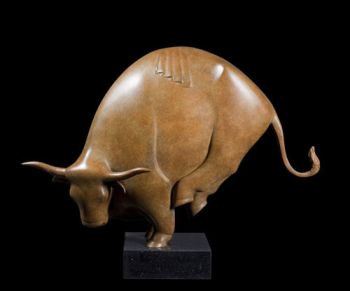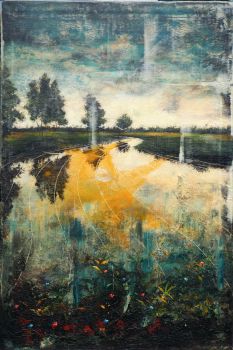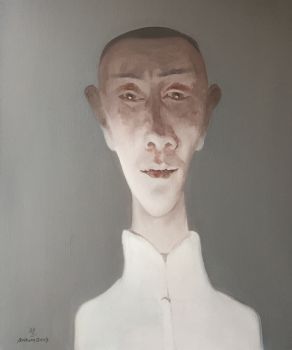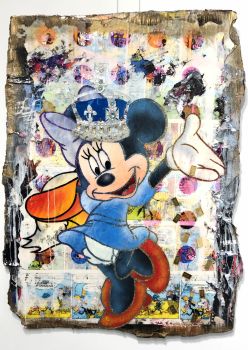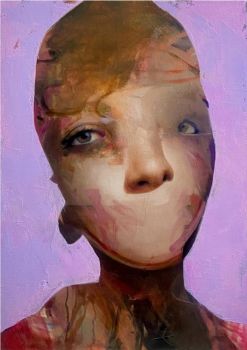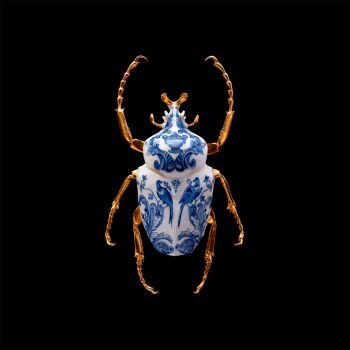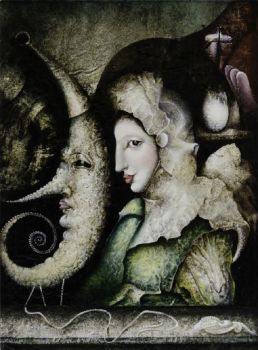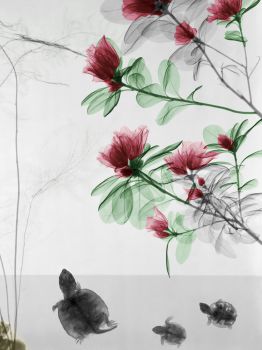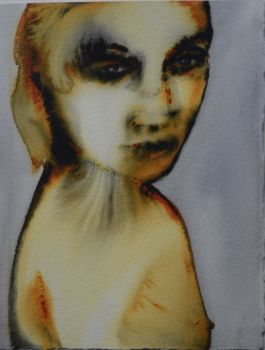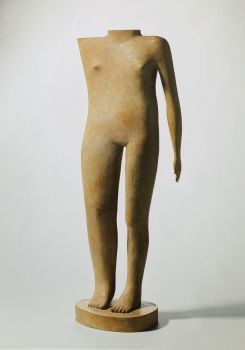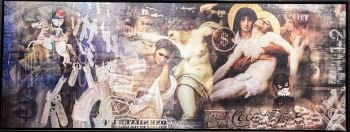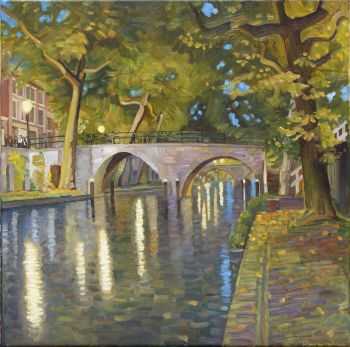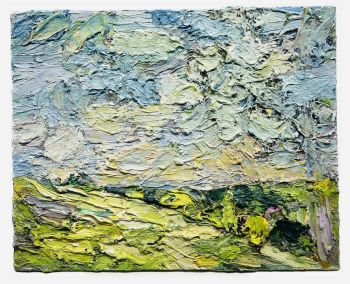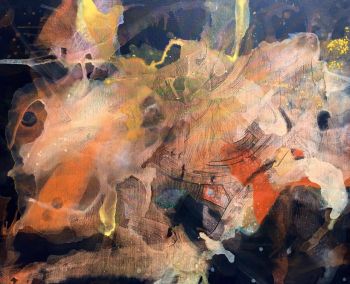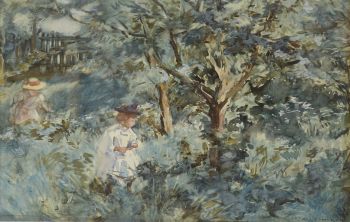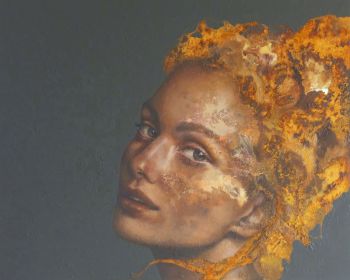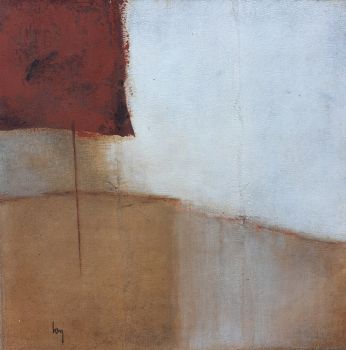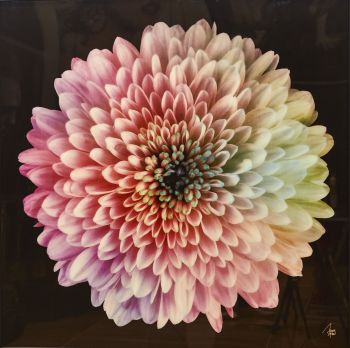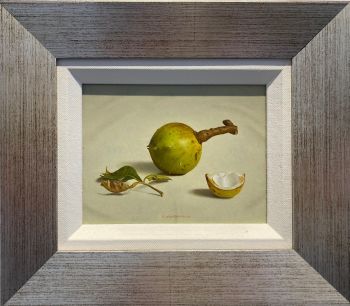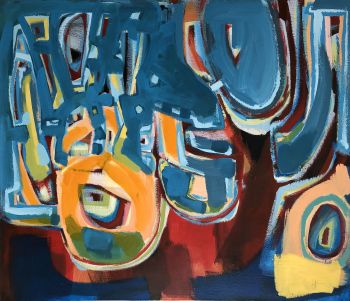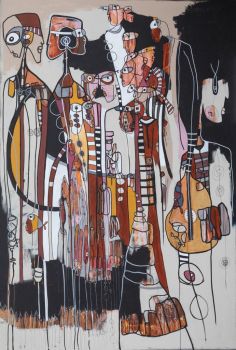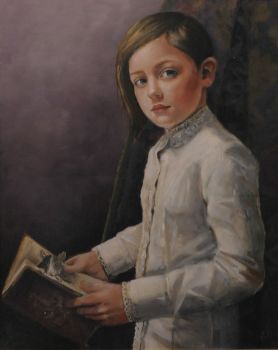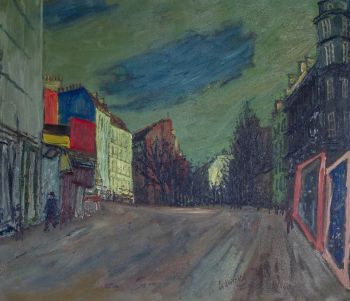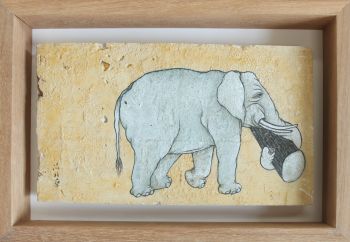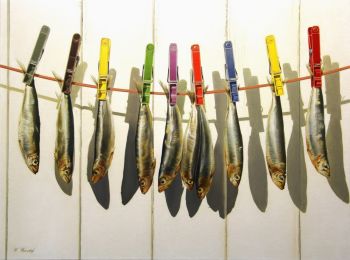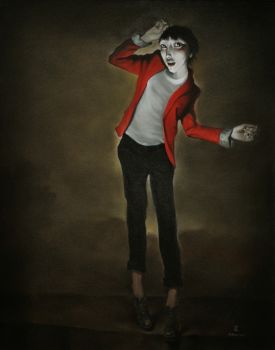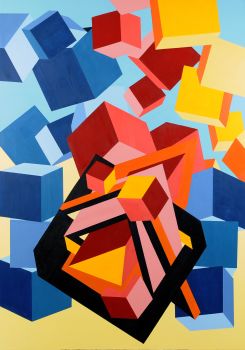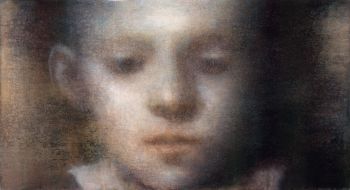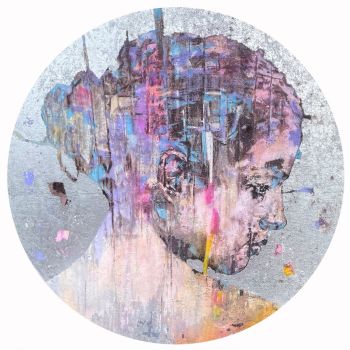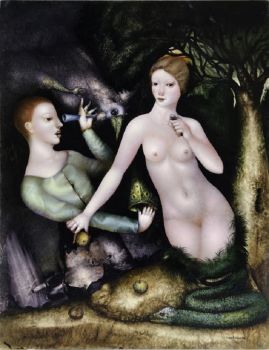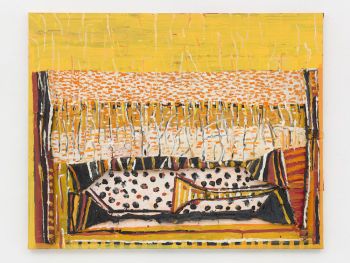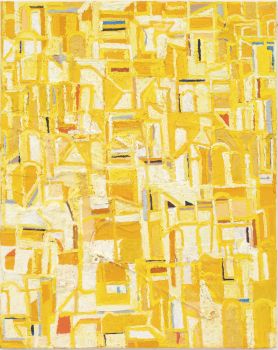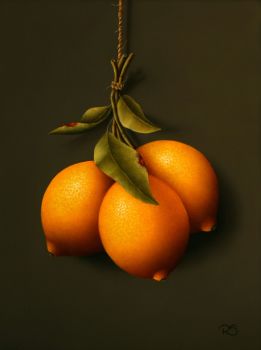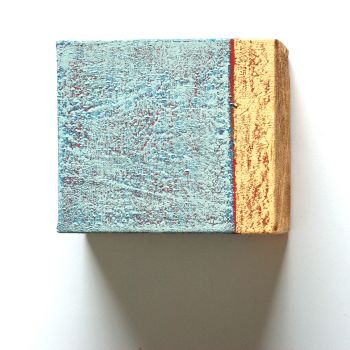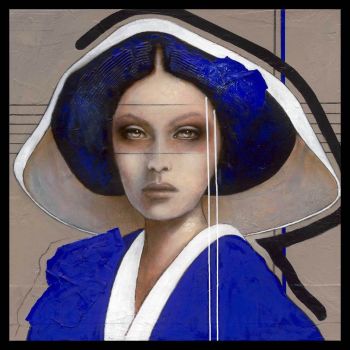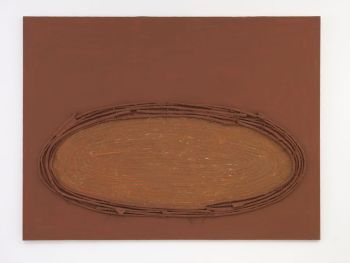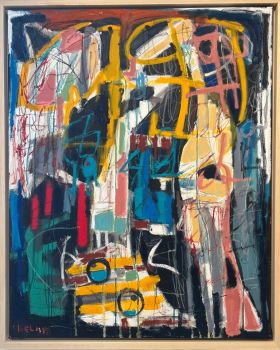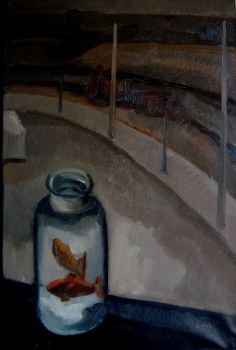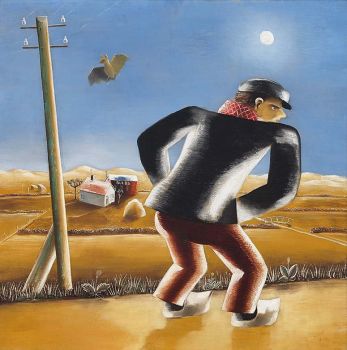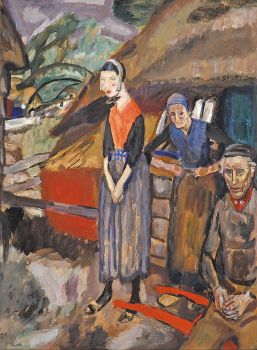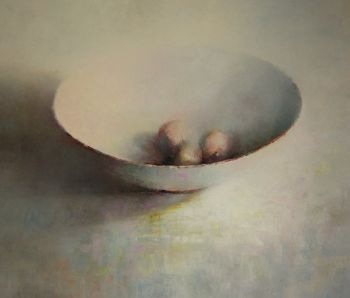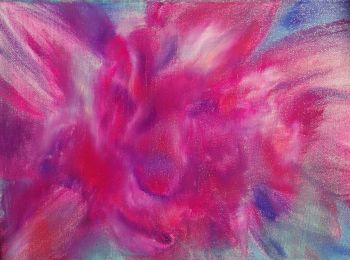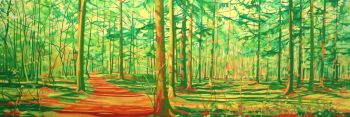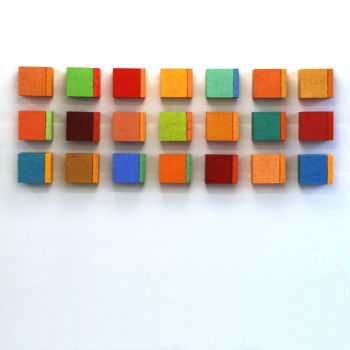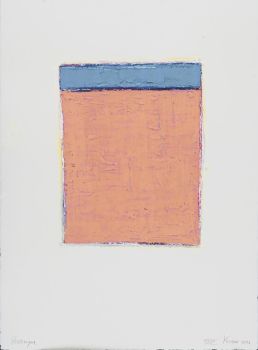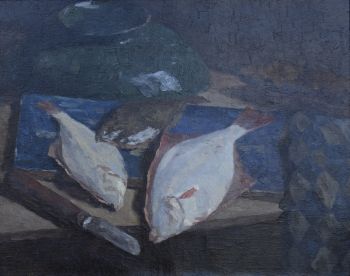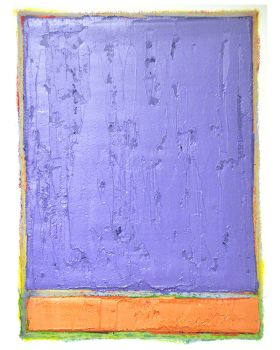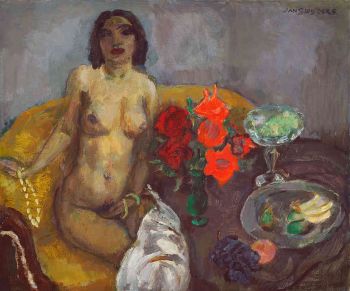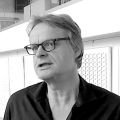The Versatile World of David Hockney
In 1962, David Hockney painted a message in capital letters on a chest of drawers at the end of his bed. “Get up and work immediately” it said, and Hockney’s been obeying it ever since. From monumental paintings of swimming pools and tender meticulous portraits to photo collages and brightly coloured landscapes, Hockney has continuously found ways to reinvent himself.
In his relentless pursuit of the new, he has produced many highly versatile and innovative artworks.
1. David Hockney, A Bigger Splash, 1967. Acrylic paint on canvas, 2425 x 2439 x 30 mm, Tate.
Attracted to the beautiful light and the relaxed way of life in California, Hockney went to Los Angeles in 1963, a year after graduating from the Royal College of Art in London.
Fascinated by the Californian houses with swimming pools, Hockney painted one of his most famous works, A Bigger Splash (1967, fig. 1) It shows a yellow diving board that juts out towards a swimming pool. A modernist bungalow in the background is surrounded by two palm trees. On the turquoise water, parts of lighter blue are combined with fine white brushstrokes, representing a splash. The liveness of the splash stands out against the static and geometrical lines of the house, the pool's edge, the diving board and the palm trees.
Inspired by a splash on a photograph, captured in a split second, Hockney meticulously tried to recreate it in this work, by using acrylic paint: a relatively new artistic medium at that time.
2. David Hockney, Man in Shower in Beverly Hills, 1964. Acrylic paint on canvas, 1673 x 1670 mm, Tate.
Hockney was just as much intrigued by showers, a symbol of American culture, as by swimming pools. Man in Shower in Beverly Hills (1964, fig. 2) depicting a nude male in a grey and black tiled shower, is notable for its subtle flattening and simplification of forms. The unrealistically small table and chairs in the background demonstrate Hockney’s disregard of linear perspective and proportion.
Moving water, domestic scenes and male nudes, reflecting Hockney’s homosexuality, are recurring themes in the artist’s oeuvre.
3. David Hockney, Mr and Mrs Clark and Percy, 1970-1971. Acrylic paint on canvas, 2134 x 3048 mm, Tate, London.
In 1968, he began painting a series of large double-portraits of friends, including the magnificent work Mr and Mrs Clark and Percy (1970–1, fig. 3). It shows the dress designer Ossie Clark and the fabric designer Celia Birtwell in their home environment, shortly after their marriage. Percy is the name of one of Clarks’ cats, sitting on his knee. They are portrayed in a style which is both naturalistic and highly simplified.
The painting carries a symbolic meaning. For example, the lilies to the left of the woman are traditionally a symbol of the Annunciation and female purity. In addition, the cat might be allegorizing Clark’s free bohemian lifestyle.
The gap between the couple seems to have been prophetic because the marriage did not last.
4. David Hockney, Pearblossom Hwy., 11 - 18th April 1986, #2, 1986. Chromogenic print, 181.6 × 271.8 cm, The J. Paul Getty Museum, Los Angeles
In the early 1980s, Hockney started to produce his characteristic photo collages which he called “joiners”, made by joining hundreds or even thousands of Polaroid photos together into an impressive patchwork image.The eye constantly bounces around, focussing on small details; although the image is still it gives the impression of motion.
One of his celebrated joiners is Pearblossom Hwy,. 11-18th April 1986, #2 (1986, fig. 4). Using a 35 mm camera, Hockney photographed the Pearblossom Highway, north of Los Angeles, for a period of eight days to create this incredible work with every inch in sharp focus: from the cigarettes and cans at the front to the mountains on the horizon.
5. David Hockney, Going Up Garrowby Hill, 2000. Oil paint on canvas, 2133.6 x 1524 mm, Private collection, Topanga, California.
Hockney returned to the Yorkshire Wolds in 1997, a charming rural area in England where he spent his summer holidays during his youth in the 1950s. Driving each day across the Wolds, he was struck by “the living aspect of the landscape”.
Over the next decade, Hockney painted numerous landscapes of the Yorkshire countryside, such as Going Up Garrowby Hill (2000, fig. 5). The painting is boldly coloured and lushly painted, in some way reminding of the vibrancy of the Fauve painters, such as Matisse and Derain.
Rather than portraying a photographic representation, Hockney tried to express his personal feelings for the scenery in this work.
6. Published October 2016. The book measures 50 x 70 cm and contains 498 pages of English text, 13 fold-outs.
With adjustable bookstand designed by Marc Newson (Available at Scriptum Art Books).
All of these impressive works have been compiled in A Bigger Book (fig. 6), TASCHEN’s SUMO-sized monograph of David Hockney.
Never before has Hockney’s oeuvre has been published on such a monumental scale: from his teenage days at the Bradford School of Art, up until his most recent landscapes. A Bigger Book, published in a limited edition, is signed by the artist and comes with its own adjustable bookstand. It is available at Scriptum Art Books.
Interested in discovering and buying more modern art and contemporary art, have a look at our website Gallerease!
*Header image: David Hockney, Winter Timber, 2009. Oil on 15 canvases, 274.3 x 609.6 cm, (each 91.4 x 121.9 cm), Private collection.




